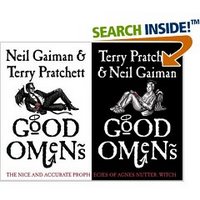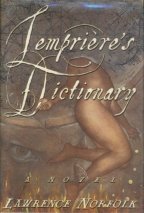Griffin & Sabine: An Extraordinary Correspondence (by: Nick Bantock)
Griffin & Sabine: An Extraordinary Correspondence
by: Nick Bantock
Chronicle Books
1991
ISBN: 0-87701-788-3
A friend of mine, a fellow book-lover and wordsmith, once told me that I am a connoisseur of books, while she, instead, is a binger. Oh really? I thought. I felt an insane desire to defend myself, to somehow prove my lifelong, habitual (over)consumption of entire libraries of books (or at least the aspiration to do so); to protest my innocence of literary snobbery and exhibit my insatiable desire for more, and then more, words to read. Even the most elite of sommeliers, I reasoned, imbibe more than the requisite sips to test for tannins, bitterness, and fruit; certainly they polish off the occasional bottle, even if it be grape-flavored swill.
I, however, am no sommelier.
I have been known to devour entire novels without leaving my sofa and my afghan, save to warm my tea; even then only in between chapters and with much regret. I have been known, to re-read final chapters in order to postpone the inevitable finit, even as I had guzzled the previous chapters without stopping for breath. I have books stacked in every room of my house; some, for the sake of forthrightness and clean living, in plain sight, others secreted, like a bad habit, in drawers and cabinets. I currently have three novels in my car. Books over breakfast, in front of the fire, as I drift to sleep. At least it’s good for my brain and probably won’t damage my internal organs – except for neglecting to eat while at the climax of book five of Harry Po... I mean, Anna Karenina.
I do have a reputation to uphold, after all.
To be fair, however, I must admit that different books require different tactics. Some are quick shots: effective yet over quickly; others offer the heady fullness and depth of conversation over a Guinness; while still others are the lighthearted, colorful airiness of a cosmopolitan.
And then there’s the wine-drinker’s delight. A soft, mellow opening, with a hint of rosemary (“that’s for remembrance”), increasing flavors of fruit and flowers, and a finish both bitter and sweet. That’s Griffin & Sabine: An Extraordinary Correspondence. Short enough for an afternoon toddy, long enough for a week’s worth of tiny, delightful, sips.
Technically, the Nick Bantock’s story of the characters Griffin and Sabine constitutes a trilogy, but I only speak of the first installment, for to do otherwise will hinder your enjoyment of this first. Suffice to say, the second book is a continuation of the first, and the third a variation on the theme. Since this particular book is, though essentially epistolary in nature, so much more than just a book of letters, I’ll offer first the essential story, the first aromatic invitation to further, albeit quiet, intoxication.
This is not your typical romance. Griffin Moss is an artist residing in London. A woman from Sicmon Islands in the South Pacific, Sabine Strohem, sends Griffin a cryptic postcard, complimenting him on his work and requesting one of his “fish postcards.” Griffin, though he has never heard of or met this woman, complies, and so the correspondence begins. Mysteriously, and mystically, connected from the start, the two begin to share their lives, their dreams, and then more with one another. And then... oh! and then.
And now, a tiny sip, only the smallest taste, of this reading experience.
The apparent simplicity of the tale, as depicted in this brief synopsis, seems almost unjust. Indeed, the passions and vulnerabilities of the gentle Griffin and the enigmatic Sabine only truly achieve fruition within the pages of this beautiful book. I found my copy of this book in the Art History section of the bookstore, and with good reason. As I’ve said before, it’s not your typical romance story, and it’s not your typical book. The front of every page consists of a hand-drawn postcard image, created by one of the characters, while the reverse is, of course, the text of the letters. As their relationship progresses, the handwriting becomes smaller: they have more to say. Finally, the postcards become letters inserted into genuine envelopes affixed to the page.
For instance, the first Griffin card, which he sends in response to Sabine’s request, is a humorous illustration of a goldfish flying through empty space, leaving behind a wine glass mid-shatter. The title, according to the reverse of the postcard, is “Drinking Like a Fish.” Sabine’s pieces usually depict some aspect of life in her exotic, island land. Strange distorted creatures that are not so much frightening as they are curious and intriguing, much like Sabine herself.
The artistry that Bantock, an artist himself, employs is, in a word, stunning. Each lush, vibrant postcard represents each character so distinctly, and so marvelously, that even as I’m swept into the story of the correspondents, I spend long moments studying the drawings. They reflect the characters’ personalities and moods, as well the evolution of the story as it, quite literally, unfolds before my eyes. A reader can watch as Griffin’s fears and Sabine’s compassion become manifest in the bold and dark, the stark and vague, the playful and surreal drawings they each produce.
This is a story about art, and words, and love. This is a story of art, and words, and the love of both.
Savor this one slowly, like an old, fine wine. This time, be a connoisseur.
On the KTG Hint of fruits and tannins scale, Griffin & Sabine earns a perfect 5 out of 5. I temper this slightly with the caveat that this particular book requires a little more... physical reader / text interaction. Readers must open envelopes, unfold letters, then refold them; not to mention the absorbing (and possibly for some, distracting) pictures and paintings on each page. Of course, the story holds up on its own without the images, but, honestly, they add such richness, it's worth taking the time to carefully peruse them. Just something to be aware of before embarking on this more than palatable - indeed, intoxicating - work of art and fiction.
Craft: ÂÂÂÂÂ
Story: ÂÂÂÂÂ
~~~~~
Overall Rating: ÂÂÂÂÂ



